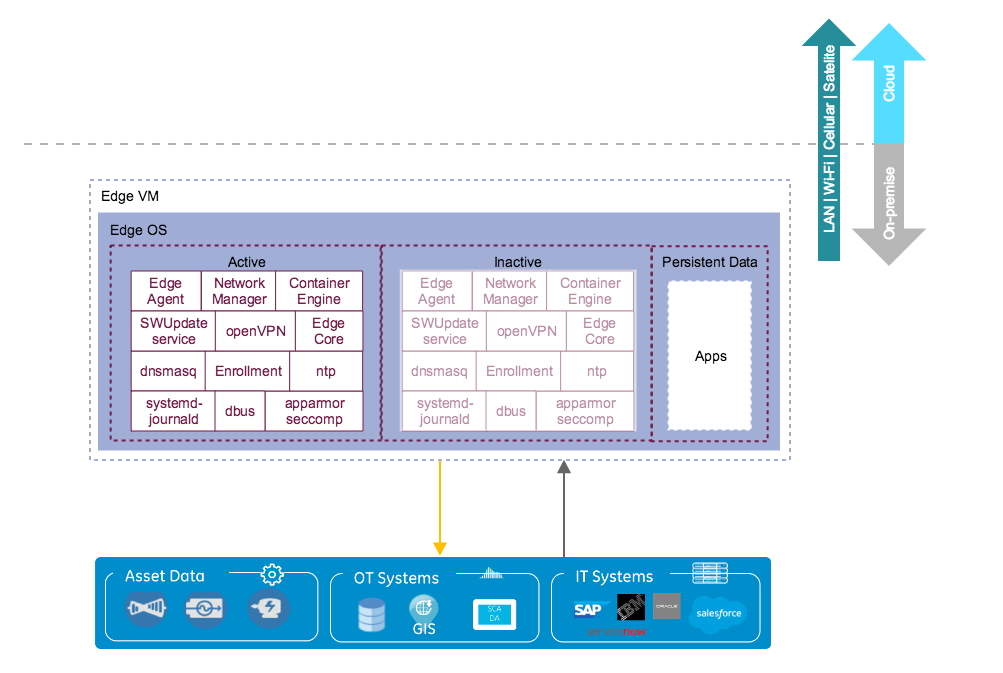Edge OS Architecture
The Edge Operating System is a baseline Yocto Linux distribution that can be extended and ported to many bare metal platforms or virtual environments. It is architected around the design goals of small footprint, security, multi-container-based application hosting, and edge platform management.

Partitions

As seen in the above diagram, the Edge OS image is divided into three partitions (the scale of
the partitions in the diagram do not reflect actual partition sizes):
- Active Partition: This partition is the currently running version of the software. (Read Only)
- Inactive Partition: This partition is used as part of the update process.
- Persistent Data: This partition is used to store all mutable data and must endure device restarts and OS upgrades.
When the operating system is being updated, the following processes will occur:
- The active partition will be “snapshotted” to the inactive partition.
- Updates will be applied to the inactive partition.
- The inactive partition will become active.
- The system will attempt to reboot.